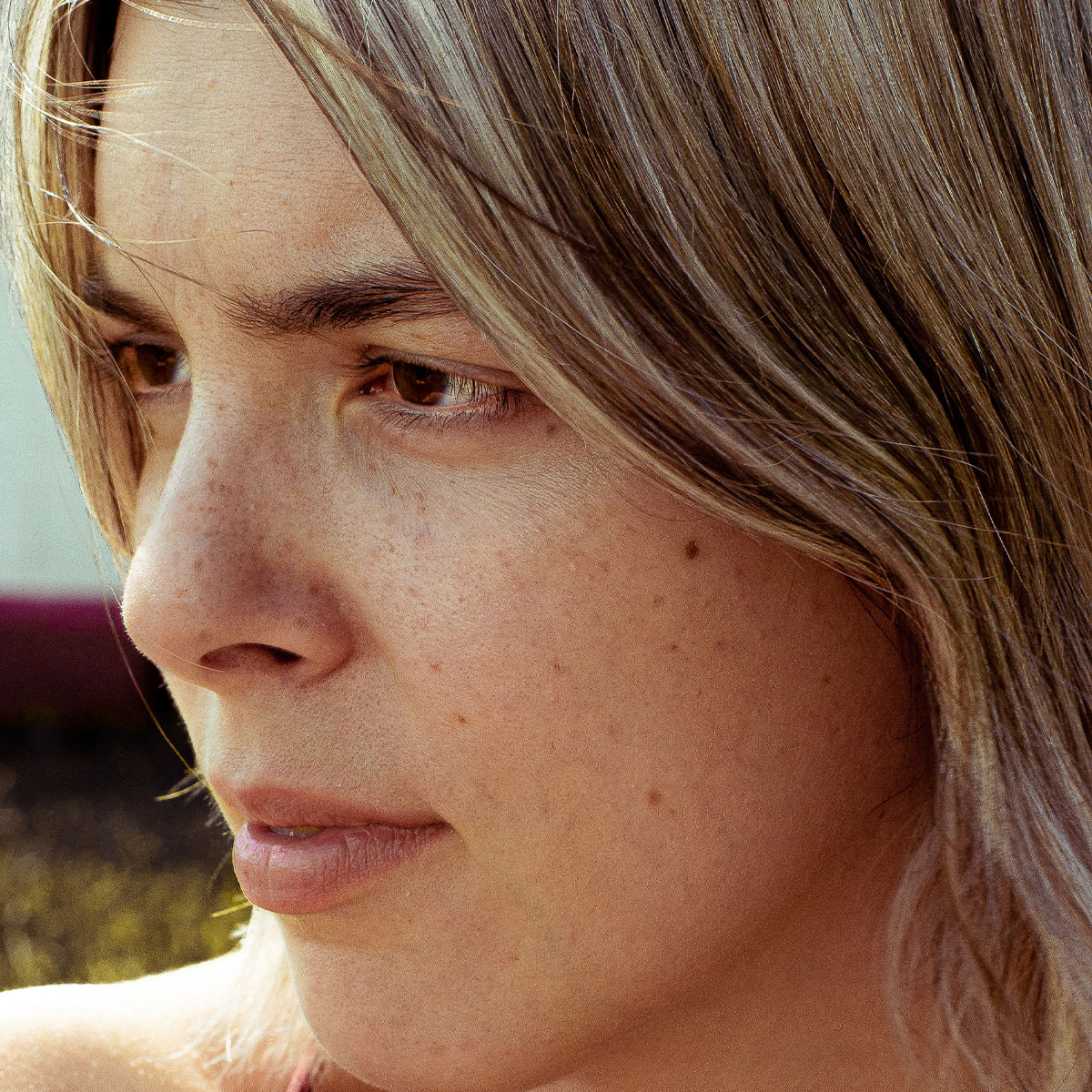What is oily skin?
Oily skin is characterized by thick, shiny appearance with visible large pores. The skin becomes too oily because the sebaceous glands produce an increased amount of lipids on the skin surface. This makes the skin prone to blackheads, blemishes, acne, and other skin imperfections. Oily skin occurs in men more than women and can significantly affect younger persons, specifically adolescents. Since more active oil glands are in the T-zone, the nose, forehead, cheeks, chin, neck and even the chest tend to be affected the most.[1] During puberty, there is a surge in androgen levels, which are male hormones present in both sexes. This signals the sebaceous glands of the skin to mature. During this time, the body starts producing more skin oil.[2] To get from the glands to your skin, the secreted oil flows into nearby pores and eventually works its way out to the skin surface. For some people, the sebaceous glands go into overdrive resulting in an oily and greasy look. This oily appearance usually resolves on its own after puberty, but can persist into adulthood. The good news is that according to experts, oily skin can delay the effects of aging as the grease absorbs some of the sun’s harmful ultraviolet rays, and the sebum also helps the skin to moisturize.[3] In this way, oily skin protects the skin from sun damage and keeps it hydrated to prevent dryness. The bad news is that you have to suffer from an oily, greasy appearance which is unpleasant to look at. It’s worth remembering that oil production by the sebaceous glands is a normal part of healthy skin. In fact, people with naturally oily skin tend to have fewer wrinkles. So, remove excess oiliness in your face when you need to look your best, but take precautionary measures to preserve your skin’s natural anti-aging mechanism.
What causes oily skin?
If you experience struggling with the daily annoyance of an oily, greasy face, you know how difficult it is to get your skin under control. Adding to your frustration is the fact that several products in the market are claiming to eliminate or reduce oil production. First, you must know the causes of an oily skin so that you can come up with ways to manage it. Oily skin affects people of all ages. It’s a natural spectrum and is probably genetic in origin. So while genes can play a part, if your parents have oily skin, then you are more likely to have it as well. Hormonal changes can also be responsible for oily skin especially in women during their menstrual cycle, pregnancy and the menopause period. Fluctuations in hormones can stimulate the sebaceous glands to produce more oil. For both sexes, oily skin can be stimulated by a physical or emotional situation. When a person undergoes stress, especially for prolonged periods, fluctuations in hormones happen. The stress hormone called cortisol becomes elevated and may cause the sebaceous glands to secrete more oil.[4] Another factor that can contribute to oily skin is the weather. A sudden rise in heat and humidity during spring and summer can accelerate oil production.[5] In contrast, when the air becomes too dry during the winter season, the skin can get dehydrated and excess oil may occur as the body’s way to compensate with the situation. Simple skin-care routines such as over washing or scrubbing can also cause oily skin. This is because the sebaceous glands produce more oils in order to make up for the lost oils when you wash or scrub. If you are on hormonal birth control and hormone replacement medications, oily skin can be a side effect of these medications. Whatever’s causing your oily skin, there are things you can do to control it to achieve a radiant skin with less shine.
What is the treatment for oily skin?
The first step in caring for oily skin is to assess your current daily skin-care routine. Using products that may make your skin feel less oily may seem like a good idea, at least initially, but in the long run using such ingredients might result in bad side effects. Oil production is increased by irritation, so stronger products are not recommended.
How to treat oily skin?
Cleansers
Use a gentle facial cleanser at least twice a day. Most dermatologists agree and recommend that cleansing the skin with a gentle, pH balanced cleanser (with pH of 5.5 to 7) such as the Chi Green Tea Cleanser is the best way to manage oil production.[6] You may also need different cleansers depending on the weather. In colder months, your skin will naturally be drier so a gentle cleanser is recommended. For hotter months, you must use a thorough, deeper cleanser.
Toner/Spritz
Use an alcohol-free toner loaded with antioxidants. Hydrating Spritzes such as the Chi Floral Spritz contains Witch Hazel which is ideal for an oily skin. Most people with oily skin tented to want to dry out the oil resulting in a dehydrated skin. Toners claim to remove excess oil and tighten the pores which can actually have an adverse effect on oily skin. If the oil is removed then the skin is likely to produce more oil to compensate. It is not possible to “tighten” pores as they are open follicles used to expel oil and sweat. Toners may temporally tighten a pore but a few minutes later it will relax back to its normal state.
Serums
Exfoliate with Fruit Acids (BHA). If you have an oily skin, you might have an extra-thick layer of dead skin cells which accumulated on the skin surface, along with the thick pores. Chi’s Fruit Acid Mix exfoliates both the skins surface, along with the lining of the pores, to allow easy oil flow, preventing it from becoming clogged. [9] In addition, the regular use of AHA and BHAs can help reduce blemishes over time. Chi’s Bamboo Skin Polish used the following morning will help clean clogged pores, and gently polish away dead skin cells.
Moisturisers
Although people with oily skin tend to avoid moisturisers, it is still important to protect the skin from dehydration. Our skin is composed of natural oils, and to balance oil production by the sebaceous glands properly, we need to avoid oil-free products as it will only result in overproduction of natural oils by the body, thus creating blemishes and breakouts. This is because the body is in a constant fight for balance. Our H2O moisturiser has incredible hydrating qualities from the marine extracts and vitamins in its formulation. It has a very light consistency and will not feel greasy on an oily skin.
REFERENCES
1. Powell. F. (n.d). Rosacea: Diagnosis and Management, page 9.
2. Cheung, T. (1999). Androgen Disorders in Women: The Most Neglected Hormone Problem, page 59.
3. Gould, F. (2005). Aromatherapy Anatomy and Physiology for Holistic Therapists, page 25.
4. Kim, J., et al (2012). Comprehensive Aesthetic Rejuvenation: A Regional Approach, page 8.
5. Tkac, D. (1990). The Doctors book of home remedies: thousands of tips and techniques anyone can use to heal everyday health problems, page 458.
6. Schalock, P., et al (2010). Lippincott’s Primary Care Dermatology, page 30.
7. Lees, M. (2012). Skin Care: Beyond the Basics, page 18.





